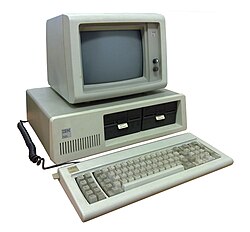Build Your Own Microcomputer Based On The Intel 8088 Pdf

Building an Intel 8008 Computer 'Clock' Building an Intel 8008 Computer 'Clock' My MARK 8 Introduction About every year I design and build a new clock. This year’s project is a clock based on an Intel 8008 first generation 8 bit microprocessor. Elves of alfheim pdf free.
Because it is a fairly unique project I’m putting more effort into the documentation. I’m also totally opening the design, hardware and software, to anyone wanting to learn more about the 8008. The only requirement I have is this: if you copy or reproduce my information please give me the credit.
I spent a good amount of time and effort designing and building the 8008 clock prototype. I’ve also tried to do this when I’ve used other's information. If you see something on my site where proper credit has not been given, let me know.
Architecture for the Intel 8086 and 8088 chips, 16-bit. The Intel solution to 8-bit design success is based on total support, the widest The 8088's powerful instruction set, 8-bit bus interface and relaxed bus on-chip Allows CPU control over display data for linked list and pointer table structures.
I have also created I8008DesignClub at Yahoo Groups for anyone interested in joining a community of 8008 users. When designing the 8008 clock it would have been nice to ask a few questions. Unfortunately, I didn’t have anyone to ask; so I did this all solo.
I’m sure there are better ways to have done things. In any case it will be interesting to see how many 8008 fans still exist. Please note that I have done my best to ensure the accuracy of the schematics and PLD algorithms. Each time I made design changes I did so by updating the schematics first and then the actual prototype. Even at that there could be errors. I make no guarantees or warranty that building your own 8008 clock will work. I can only tell you that mine works.
If you are fairly experienced and are careful you should be fine. Background I apologize if I wax philosophical too often on this page. Building this clock brought back many memories that occurred over thirty years ago. I was lucky to be a teen in the 70’s during the birth of the micro-computer chip. During that period one could not drive down to a store and purchase a home computer as one can today.
The computers of that era were university main frames and mini’s, like the PDP11’s, used by Corporations. My first access to a computer began while I was in junior high school. I discovered that I could buy time on the University of Utah’s for one dollar per hour! Unfortunately, non-university students were only allowed to buy a maximum of ten hours per month. So I plunked down my money and with punch card in hand made my way over to a model 43 teletype and thus began one of the most interesting journeys of my life. At about the same time, articles began to appear in electronic magazines that told of single chip CPU-based computers. I read in fascination about the Intel 8008 microprocessor.
As soon as I could get the address on an envelope I sent a letter to Intel asking for a copy the 8008 user’s manual. I spent hundreds of hours reading and digesting every page of that short document. The edition of Radio Electronics became one of my most treasured possessions. I read and reread every page. I fantasized about being able to afford a board set, and about building a Mark 8. But rather than building a Mark 8, I ended up, designing and building an 8008 computer of my own design, over a three year period. In reality, I probably spent twice what a Mark 8 would have cost.
But the educational value of that endeavor was priceless. Years later, in the late 1990’s, I was fortunate enough to exchange email with Jon Titus, the designer of the Mark 8. I had long since lost my original copy of Radio Electronics that contained the Mark 8 plans. Jon was kind enough to mail me a copy of the article and at the time I also discovered that Jon would be traveling to Salt Lake City. While he was in Salt Lake, we met for lunch.
Meeting Jon was a truly magical moment. I’m not sure if he remembers me, but I will always remember him. Thank you, Jon! My original 8008 computer utilized nearly one hundred TTL logic chips. The 16k of memory was comprised of one hundred and twenty eight 2102 static rams.  I spent hundreds of hours meticulously wire wrapping the processor and IO boards, as well as the back plane. The 16k of 2102 memory chips found their home on four commercial 4k S100 logic boards.
I spent hundreds of hours meticulously wire wrapping the processor and IO boards, as well as the back plane. The 16k of 2102 memory chips found their home on four commercial 4k S100 logic boards.
Build Your Own Microcomputer Based On The Intel 8088 Pdf Pdf
For input I used a South West Technical Products ASCII keyboard. For video output I built a text display from a kit sold by Mini Micro Mart. It alone had over 50 IC’s. Its design used the same shift register chip set as the Apple I. Even though I had a keyboard and a video display, the real input and output mostly occurred on the front panel using toggle switches and LEDS. Long before I completed designing and wire wrapping my computer I had hand assembled many lines of code in anticipation of the day when I could actually run the code on my own computer, although in the end, much of that code never was entered. Loading software via the front panel switches was frustratingly laborious!